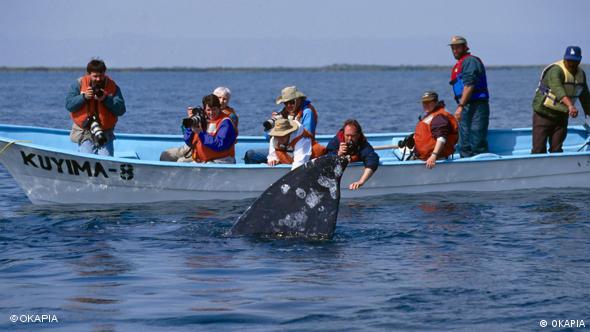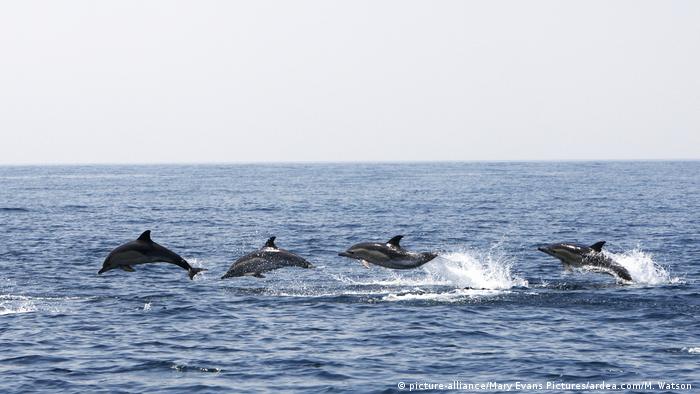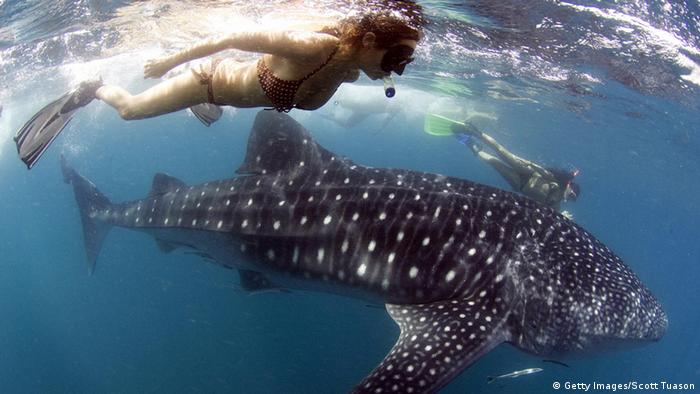Mass tourism is disturbing whales and other cetaceans struggling to live peaceably in their surroundings. Collisions with ships have been an issue for some time already – but now, tourists are wanting to swim with them.
Environmental and animal rights groups have successfully raised awareness over the negative impacts of keeping marine mammals in aquariums and zoos – but now cetaceans are at risk even in their own wild surroundings.
The unstoppable increase of tourism means many people are looking for a unique adventure far from what’s typical. However, fun for us can translate into difficulties for wildlife.
In addition to plastic pollution and other existing threats, sea mammals must now cope with tourists eager to swim at their side. Environmental groups are calling for a ban on this practice in the largest marine protected area for marine mammals in the Mediterranean, the Pelagos Sanctuary.
A new law has entered into force in France to protect whales from another lethal threat, also related to tourism: collisions with ships.
Sailing killers
Ship collision is the number-one cause of unnatural death for whales in the Mediterranean Sea. Up to 40 whales are found dead every year in the region as a result of collisions – which is a large number relative to the low reproduction rate in these mammals.
“These animals reproduce very slowly,” Denis Ody, head of the oceans and coasts section of WWF France, told DW.
Maritime traffic in the Mediterranean has almost doubled since 2002 – and is expected to keep increasing, WWF warns. In the case of the Pelagos Sanctuary, the risk of collision is three times greater than in other Mediterranean areas due to the high concentration of cetaceans, along with heavy tourist traffic in the area.
“It is like having a highway crossing through a natural reserve!” Ody observed.
Since July, all ships longer than 24 meters (79 feet) sailing across the sanctuary must implement anti-collision systems – specifically, French ones. This consists of a human observation-based alert network called REPCET.
“For the moment there are no automatic systems, so this is the best one available,” Ody said.
Interrupting nature
But even in areas far from such a maritime traffic, marine mammals don’t always get to swim peacefully. The new trend is locating whales groups with low-flying planes and bringing groups of tourists to swim alongside them.
Such a close contact with humans pushes the animals toward different behavior that can be extremely harmful, the environmental group France Nature Environment (FNE) highlights. The practice can interrupt the mammals’ feeding or breeding processes, as well as lead to breakup of the group and even separation of newborns from their mothers.
Moreover, as has already happened with other wild species such as foxes, whales and dolphins can get used to being fed by tourist operators seeking to attract them – and become dependent, the Whale and Dolphin Conservation (WDC) group fears.
If tourists are not at all concerned about these animal welfare issues, they should also be aware of the risk these wild animals can represent for them, environmental groups point out.
Fun for all?
But supporters of the practice say that whales approach the boats on their own, and that tourists do not disturb them.
“Environmental groups should go and see how well dolphins react,” Isabelle Frémont, a representative for a French tourist company, told DW. “Their claims simply don’t represent reality.”
Tourists never get into water if there are newborn animals around or if the mammals are hunting, Frémont said, and they do not provide food – dolphins are predators, they would never eat a dead sardine anyway, she believes.
The association of professional marine operators in Cote d’Azur (COMPA) commissioned a scientific report to address major criticisms. They have used this as a basis to establish concrete guidelines for sustainable practice.
This includes, for instance, that only one ship at a time should approach the animals, and that direct contact should be strictly forbidden.
“There are no reasons to ban our practice, and we are preparing documents to call for governmental support,” Frémont said.
Sustainable limits
Martina von Münchhausen, a tourism expert with WWF Germany, maintains that getting in touch with nature and wildlife in natural surroundings is much better – for animals and people – than visiting a zoo or an aquarium. However, limits must be clear.
“I encourage people to observing wildlife and learn from it, but with respect and the appropriate knowledge,” von Münchhausen said.
In some regions of the world, swimming with whales has become part of sustainable tourism, and groups like WWF promote it – but under clear and strict rules.
Indeed, the greater challenge would be to allow this practice – but under responsible limits. A quota on the number of boats is particularly important, both environmental groups and tourist operators agree.
Source: http://bit.ly/2fEw5iz














